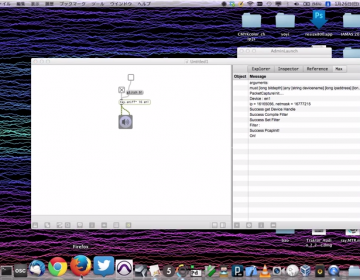The Organic, Computerized Complexity of netcat’s “Cycles Per Instruction”

By Brian Parker
In trying to introduce an album that combines elements of ambient, experimental, jazz, and classical music, all of the verbal options seemed esoteric at best. Music that exists in this realm often has an unfortunate “intellectual” air that deters even the most enthusiastic of self-proclaimed music lovers. But for netcat, a three-piece experimental/improvisational outfit based in Seattle, complex composition, customized technologies, and sharp musicianship culminates in compositions that shoot down the preconceived notions of such styles, with music that is strikingly approachable and emotional.
David Balatero, Brandon Lucia, and Andrew Olmstead began playing together at The Racer Sessions, a series of improvisational performances organized weekly by a collective of explorative musicians. Balatero and Lucia actually met years earlier through the same computer science program at the University of Washington, where the musical concept for netcat was first born. The philosophy seems deceptively simple, “What if we could take network traffic and turn it into sound?” This concept evolved into a performance piece featuring a setup of eight laptops communicating simultaneously on stage, with the musicians configuring the network, pulling cables, and finding new ways of refining and curating the sound — hardly simple.

netcat relies heavily on their classical and jazz backgrounds, and part of the creation of Cycles Per Instruction involved improvisation sessions that challenged the musicians to create structure amidst the programming on the album. Balatero posed the question, “If we’re going to have a 20 minute piece, how do we create contour?” which provides the basis for netcat’s critical level of musicianship on cello, synth, and Chango, a playable, light-controlled computer synth developed by Lucia. This approach to improvisation allows the band to harness the computers’ randomness thoughtfully, creating a futuristic and emotive conversation between man and machine. “We give it a framework, and it makes choices as data flies by. And so do we as human improvisers,” says Balatero. “It’s a theme that comes up throughout the pieces — the computer and humans are playing at the same time,” says Lucia.

While netcat’s Cycles Per Instruction is available on the popular digital avenues, the band wanted to democratize the release format in an entirely novel way. The band put the code for the album on GitHub, the online software development collaboration platform, which programmers can build out and re-create the album piece by piece. For non-coding musicians, many of the synths on the album are available for download as well, which can be used as standalone instruments or integrated into DAWs. The complexity of recreating the code is a point of enthusiasm for the band. “We were thinking about complex ways of releasing the music that would complement the amount of complexity in the music…You have to do a bit of work, and you can feel a bit of the work that we put in when we were doing the hacking up to getting it built,” says Lucia. “You can feel the process.”

There are multiple philosophies and concepts woven together in Cycles Per Instruction: improvisation, computerization, democracy of software, building and breaking technological barriers between artist, art, and audience. But through the mystified intricacy of computer programming, netcat creates a really solid, beautiful piece of music. As the band says, “netcat is an accessible, familiar approach to the complexity of computers.” netcat shows us that computers can reflect of our own dedication to organizing thoughts and ideas, and the result, if successful, leaves behind a product that transcends the medium altogether.






